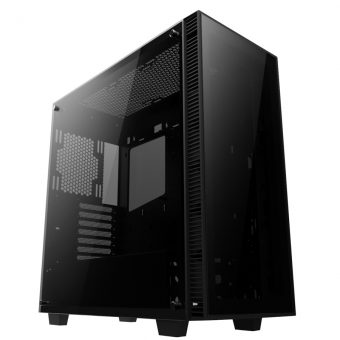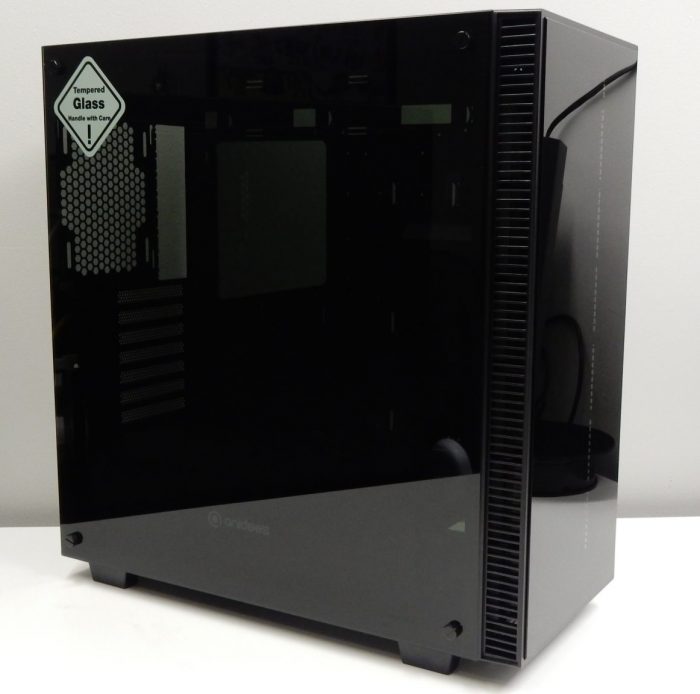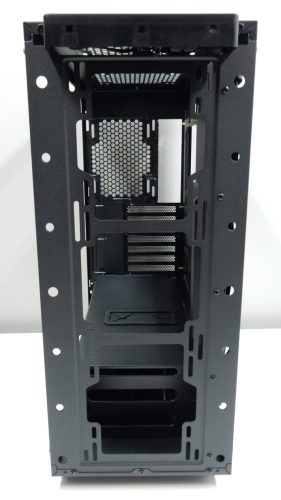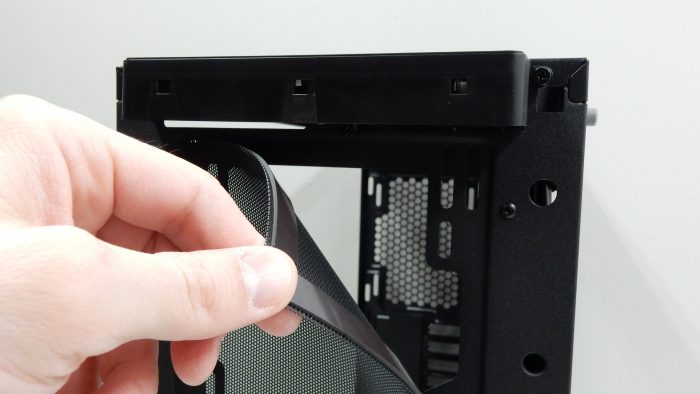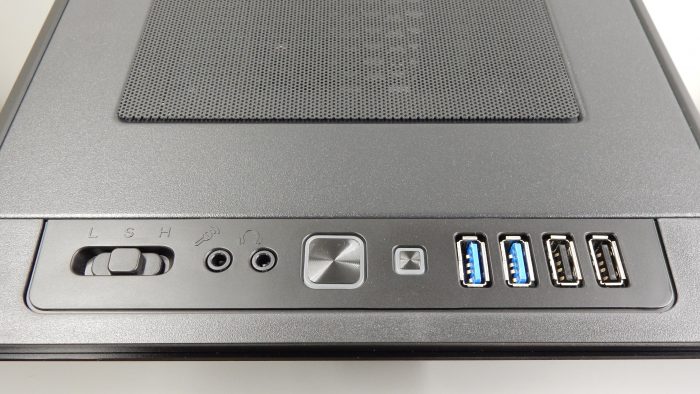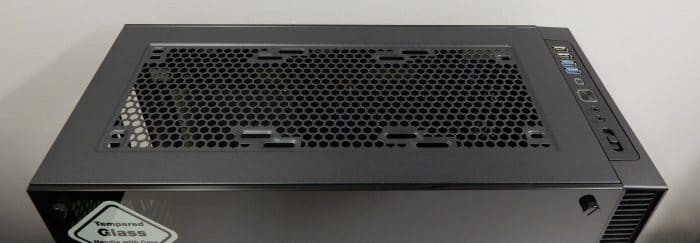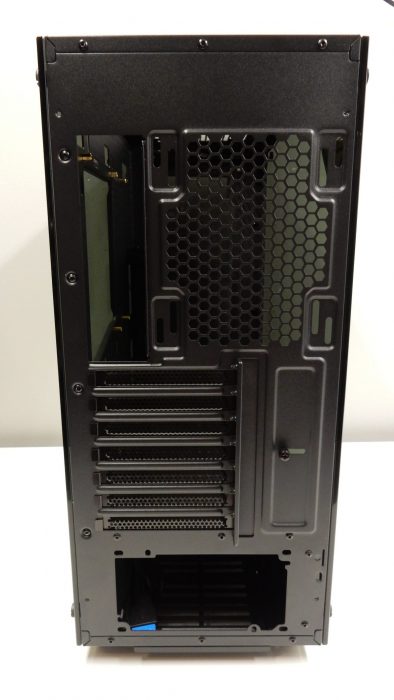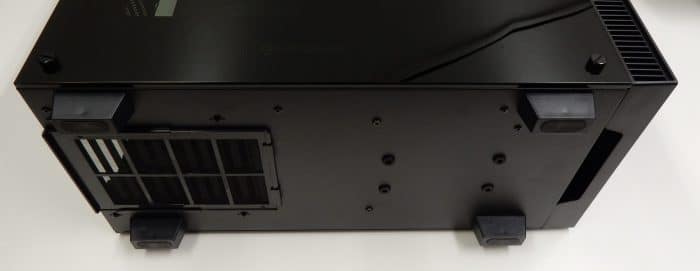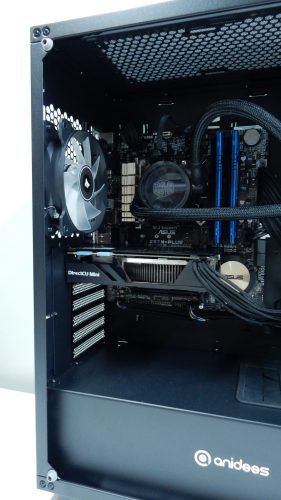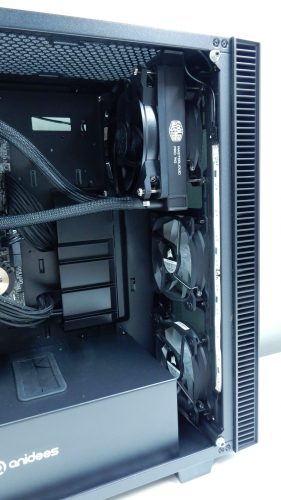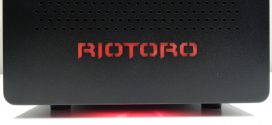INTRODUCTION
In late 2016, Anidees released their AI Crystal case; a beautiful case with tempered glass side and front panels, the new standard for enthusiast PC cases. The AI Crystal was a hit from the start, with rave reviews from just about every outlet that took a look at the case. Anidees has now come back around to offer the AI Crystal Lite, a fan-less version of the case that allows users to save a little money on the case purchase, while also allowing them to decide exactly what fans go into the case. While the fans that Anidees has provided with the AI Crystal were sufficient for most use cases, the company knew that many builders would just be swapping out the included fans to something that would match their build needs. Today we will be taking a look at the Anidees AI Crystal Lite, so follow along to see what we thought of the case!
STANDOUT FEATURES
As with all products, there are a few standout features on the AI Crystal Lite that we would like to cover. Without standout features to differentiate one product from another, we would live in a pretty boring world. Lets take a look at a few things that make the Anidees AI Crystal Lite stand out from the crowd.
Tempered Glass Panels – Not only does the AI Crystal Lite feature tempered glass side panels, but the front panel features this material as well. Each pane of glass is slightly tinted, which we really like. The two side panels are each held on by four flat thumbscrews, while the front pane is secured to a plastic front panel that can be removed with standard front panel clips found on many cases.
Dual 360mm Radiator Support – For those users that really want to get the most out of the cooling options made available to them in the AI Crystal Lite, support for 360mm radiators at the front and top of the case make liquid cooling options quite abundant. If larger fans or radiators is more up your alley, 140/280mm version can also be utilized in these locations.
SPECIFICATIONS
Available Color: Black with Light Smoky Glass
Material: Steel body / Plastic / 5mm Tempered Glass
Dimension (D / W / H): 475*216*479mm / 18.7*8.5*19.6in
Weight: 10.9 kg / 24 lbs
Motherboard Type: M-ITX, M-ATX, ATX, E-ATX (12″x13″) SSI-EEB
5.25” Drive Bay: 0
3.5” Hidden: 3
3.5” Exposed: 0
2.5” Drive Bay: 5 (2 from 3.5 HDD bracket)
I/O Panel: USB3.0 x 2,USB2.0 x 2, 3-step Fan Controller, Audio x 1,Mic x 1
Expansion: 7
Fan Control: H Mode = 12V, S Mode = 0V, L Mode = 5V
Cooling System:
- Front: 120mm/140mm x 3 (optional)
- Rear: 120mm/140mm X 1 (optional)
- Top: 120mm x 3 or 140mm X 2 (optional)
Power Supply: Standard ATX PS2 (optional)
Maximum Compatibility:
- Graphics Card Length: 410mm
- CPU Cooler Height: 175mm
- Water Cooling:
- 240/280/360 mm Rad on top 60mm total clearance for Fan and Rad (optional)
- 240/280/360 mm Rad in the front 63mm total clearance for Fan and Rad (optional)
- 120/140 mm Rad in the rear (optional)
CLOSER LOOK
Exterior
Normally when we take a look at the exterior of a case there is commentary about the size of a case window, or the paint color and texture. With the AI Crystal Lite, things are a bit different thanks to the tempered glass. Both the left and right sides of the case are comprised of edge-to-edge tempered glass panels that give an unobstructed look into the case itself. Each panel is slightly tinted a “smoky” color, which hides some of the points within a case that might be a bit messier than others. While this may deaden the glow of any interior lighting that might be installed in the case, we prefer this tinted look as opposed to a fully transparent window. Another advantage to these tinted panels is that the panel covering the backside of the motherboard will help keep any unruly cabling somewhat hidden. Those with more time and resources on their hands can come up with some pretty interesting ways to make things look quite clean back here, so a semi-transparent panel here is not a negative, and coincides with the current trend of cases with tempered glass.
Each side panel has a small hole at each corner that allows the panel to attach to the case itself. A simple, rubber-grommetted, threaded peg at each hole location provides a mounting point for the glass panels, and minimalistic thumbscrews keep the panels in place.
The front of the AI Crystal is much the same; not much to talk about when it is just a sheet of glass with a thin plastic bezel keeping it in place. The sides of the front panel are about an inch thick and feature top to bottom ventilation for the three optional fans that can mount behind the panel. Speaking of fans behind the panel, LED-lighted fans look amazing up front in this case, as will be seen later on in the review. Unlike many cases, the front I/O ports are not attached to front panel, so removing the panel for any case maintenance is much easier and less of a hassle without any attached cables to worry about.
Behind the front panel is a mesh dust filter that is magnetically secured to the front of the case body. This attachment method makes removal and replacement of the filter a breeze when compared to many filters that require the use of clips and rails that can be frustrating to work with.
Up top on the AI Crystal Lite we find the aforementioned I/O section of the case. From left to right we have the 3-way fan controller switch, microphone and headphone ports, Illuminated Power and Reset buttons, two USB 3.0 ports, and two USB 2.0 ports.
Taking up most of the top of the case is the upper ventilation configuration. Three 120mm fans or two 140mm fans can be mounted here, or radiators in similar fashion. A removable mesh-type grille/filter is held in place by magnets, and while top mounted fans are typically used in an exhaust configuration, it does provide a nice and uniform look to the top of the case.
Out back we find room for a single 120mm or 140mm fan or radiator, along with your standard motherboard I/O opening and expansion slots. The bottom-mounted PSU opening is part of the back panel and does not separate from the rest of the case.
The bottom of the Anidees AI Crystal Lite is pretty barren, except for four plastic feet with rubber pads on the bottom to keep the case in place, as well as a removable PSU dust filter. Unfortunately, the filter is removed from the back side of the case, which can be a bit of a hassle come maintenance time, but this is mostly a non-issue.
Interior
After removing the four thumbscrews that attach the tempered glass side panels, we are presented with a quite clean interior design in the AI Crystal Lite. Obviously missing are any fans and their associated cables that need to be ran, so the stark interior is quite shocking at first. The top of the case interior provides ample room for top-mounted radiators and fans, but as always, do consult your build part specifications when trying to cram a heavy duty setup inside the case. A motherboard backplate cutout is provided to make swapping out coolers easier for users.
To the right of the motherboard area is a plastic panel that serves to purposes. The first is to provide a bit of cable management and organization, as the panel covers two pass through holes for things like SATA cables, USB header cables, etc. The second use of the plastic panel is as an add-in card support. By holding long PCBs in place, this panel helps to prevent sag on long add-in cards.
Below the motherboard area is a standard PSU cover with a single, rubber-grommetted, pass through for cabling on top. The side of the cover is the Anidees logo and brand name, the only place you will find any branding on the AI Crystal Lite. The PSU cover doesn’t quite span the entire length of the case, and the front section is open to allow for fans and radiators to be installed and to pass a bit of airflow across any drives that may be installed in the drive cage hidden underneath the cover.
Taking a look at the back side of the motherboard panel we are greeted with our first sign of any drive mounting options. These come to us in the form of three 2.5″ mounts located just below the CPU area of the motherboard, as well as two 3.5″ trays in the lower PSU section of the case. The three 2.5″ trays are easily removed with a single thumbscrew each, as are the lower 3.5″ trays.
In the top left section the AI Crystal Lite features an integrated fan hub with room for five 3-pin fans which are all controlled by the top-mounted fan controller mentioned earlier. Power for this hub is provided by a standard 4-pin MOLEX connector.
Some consideration for cable management has been made, as there is quite a bit of room along the front panel area to run cables, and multiple options are available for attaching zip-ties to keep cables in place.
INSTALLATION AND USE
| Test Setup | |
| Case | Anidees AI Crystal Lite |
| CPU | Intel Core i7 4790K |
| Motherboard | ASUS Z97M-PLUS |
| RAM | G.Skill Ares DDR3 1866, 16GB |
| CPU Cooler | Cooler Master MasterLiquid Pro 140 |
| Storage Drives |
|
| GPU | ASUS GTX970-MOC-4GD5 |
| PSU | SilverStone SST-ST55F-G |
| FANS | Corsair AF120 LED |
The installation of components in the Anidees AI Crystal Lite was fairly straightforward. Most components installed in a standard manner, and nothing special was encountered with our motherboard or graphics card. Mounting our AIO cooling solution from Cooler Master was a bit tricky, as the configuration of that unit only allowed the radiator to mount in the top section of the front panel.
The other issue we ran into when installing our system in the AI Crystal Lite was the length of our PSU cables weren’t quite enough to make it to every location we needed. We ended up purchasing a few cable extensions to not only make our connections, but to make things look nice in the viewable areas. While this may not affect all builds, it is always something to keep in mind when moving to a new case or just upgrading a few parts here and there.
Since the AI Crystal Lite does not come with any fans included, dropping the MSRP down about $15 from the version that includes fans, we grabbed a few sets of Corsair’s AF120 LED fans with white LEDs. Installation of the fans was as easy as it gets, and we placed three up front, and one in the back of the case. All of the fans had their cables routed to the integrated fan hub and are easily controlled by the 3-way fan controller on top of the case. One odd thing we noticed with the fan hub is that it only has room for five fans, while the case supports up to seven fans. It would have been nice to see an additional two ports on the hub, but we also realize that most motherboards offer one or more fan headers that can be controlled via the BIOS or motherboard utility.
Just to add a bit more lighting to the case, we opted to throw in an NZXT HUE+ kit, mounting the four LED strips around the inner edges of the side panel. This configuration worked out great, as the steel body of the case allowed the magnets in the light strips to easily attach to the case, and the strips are mostly hidden from direct view. We really recommend adding some sort of internal lighting on a case like the Anidees AI Crystal Lite, as it looks amazing.
While it will vary quite a bit depending on the type and number of fans installed in the Anidees AI Crystal Lite, along with what setting you have the fan controller set to, the overall noise output from this case was quite low. We utilized the low fan setting, as high was much higher than we wanted to deal with, as the case sits about four feet away from us. The LED lighting from the fans had a nice look to it through the tinted glass panels, and the extra lighting from the HUE+ didn’t seem to be too diminished by the tinted panels either.
CONCLUSION
The Anidees AI Crystal Lite is without a doubt one of the best cases we have seen in the last year or so. It brings together so many of the current trends in cases without breaking the bank. Three tempered glass panels provide a look to this case that no other material is capable of. Sure, we have had case windows for over a decade, but the use of tempered glass blows previous solutions out of the water. Sure, there is a little extra weight involved, and a bit of extra caution should always be taken when dealing with glass, but we are more than willing to accommodate these minor nuances to get the look that tempered glass provides.
Since the AI Crystal Lite is the fan less version of the case, it comes with a slightly lower price of $125 over at Amazon. And while you will probably end up spending a bit more by the time you are done outfitting the case with fans, Anidees has left the choice up to you and saved you a few bucks up front. And let’s be honest, except for in a few instances, when did case manufacturers include anything much better than bargain bin fans to begin with?
Installation of components was a simple and painless; no rough edges or sharp corners were encountered at any point during our time with the AI Crystal Lite. With room for multiple 2.5″ and 3.5″ drives, this case provides builders with plenty of storage mounting options.
The Anidees AI Crystal Lite enters a market that is jam packed with enough choices to overwhelm even the most experienced builder, yet easily rises to the top of the options available in its price range. The AI Crystal Lite offers the flexibility to forego any included fans and to install the fans of your choice for a reduced cost, all while offering a beautiful enclosure to encase your build in. The bar has been set high with this case, and with that, the Anidees AI Crystal Lite receives the Bjorn3D Golden Bear Award.
| Anidees AI Crystal Lite Pros |
Anidees AI Crystal Lite Cons |
|
|
 Bjorn3D.com Bjorn3d.com – Satisfying Your Daily Tech Cravings Since 1996
Bjorn3D.com Bjorn3d.com – Satisfying Your Daily Tech Cravings Since 1996

